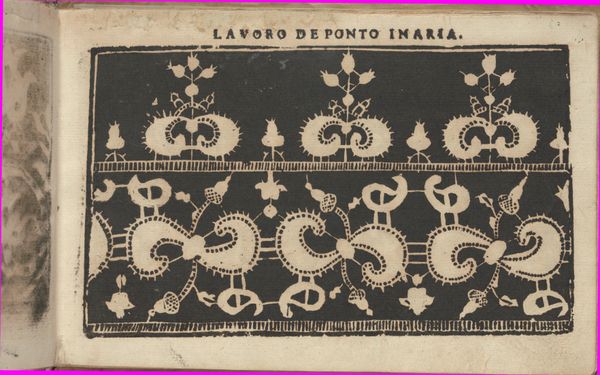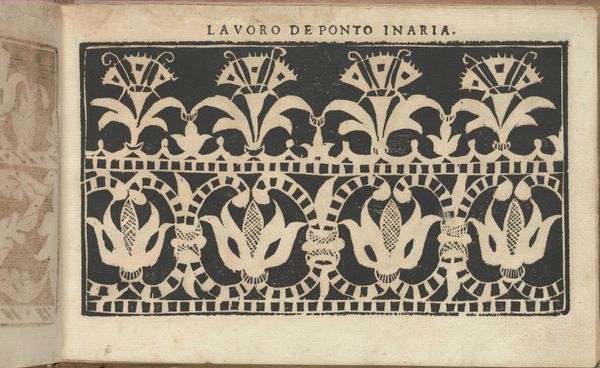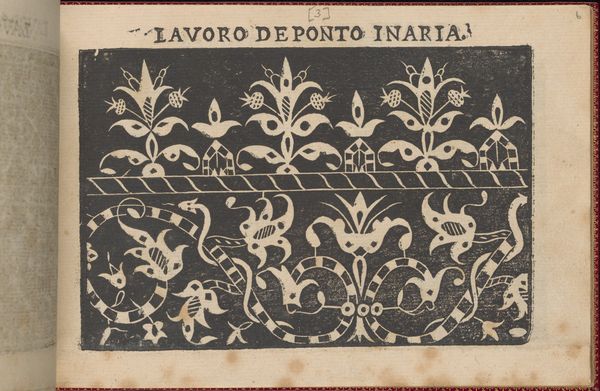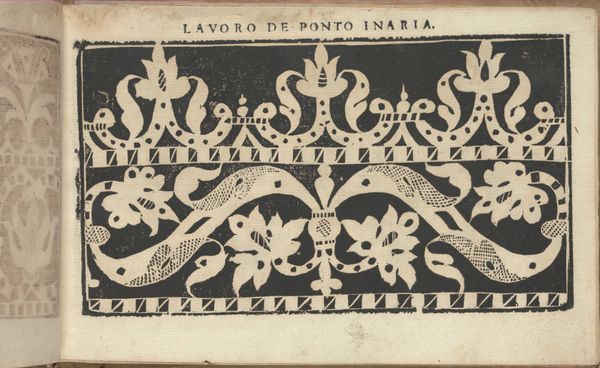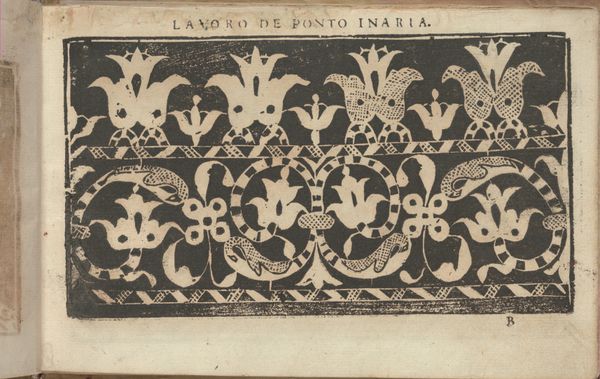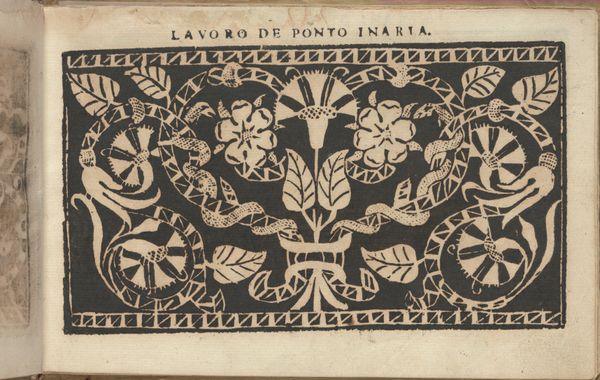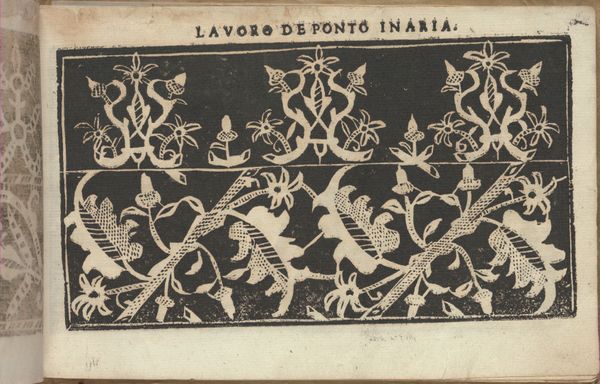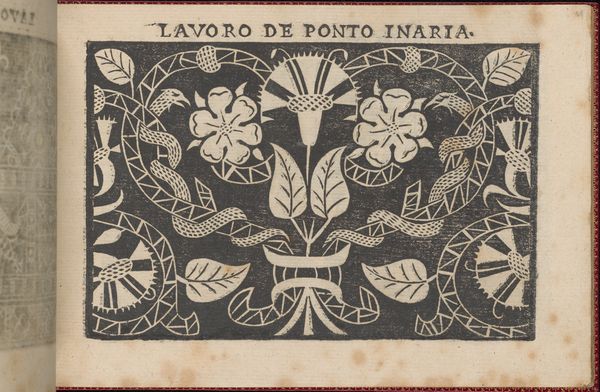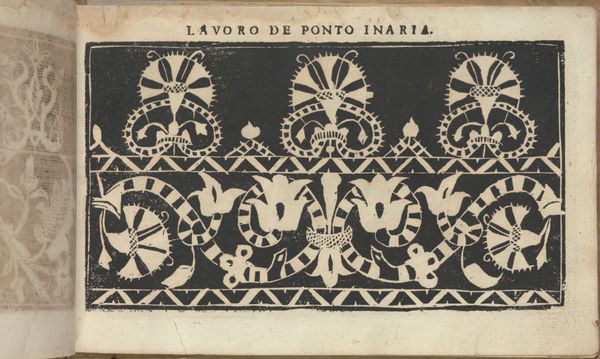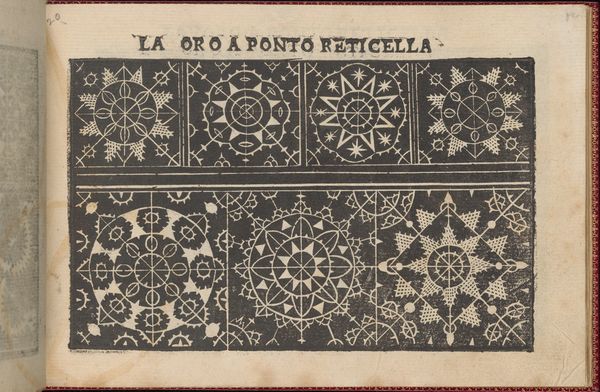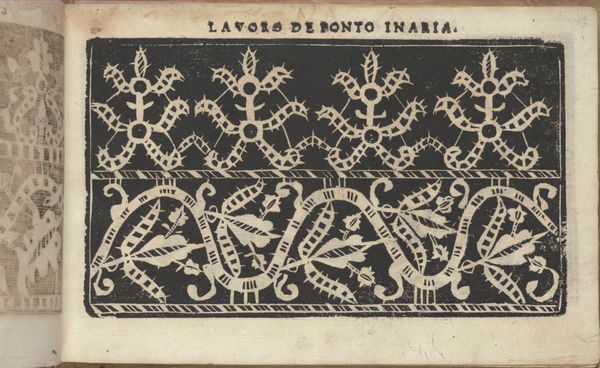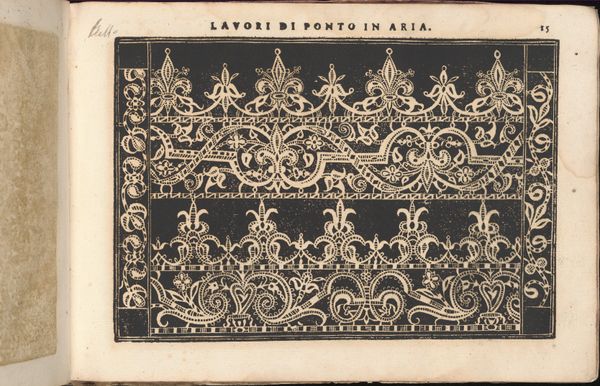
Studio delle virtuose Dame, page 7 (recto) 1597
0:00
0:00
drawing, graphic-art, print, paper, engraving
#
drawing
#
graphic-art
# print
#
book
#
paper
#
11_renaissance
#
decorative-art
#
engraving
Dimensions: Overall: 5 1/2 x 8 1/16 in. (14 x 20.5 cm)
Copyright: Public Domain
Editor: This is page seven from "Studio delle virtuose Dame," created by Isabella Catanea Parasole in 1597. It's an engraving on paper, and it strikes me as an exercise in intricate pattern making. I'm especially drawn to how the artist balances organic and geometric elements within such a restricted color palette. What do you see in this piece, from your perspective? Curator: I am drawn to the stark contrast afforded by the engraving process. The dynamism arises not simply from representational content, but in the interplay of positive and negative space. Observe how the serpentine forms are mirrored by vegetal motifs. This yields a structural equilibrium within the framed image. Do you find this a compelling approach? Editor: Definitely! It’s fascinating how the snakes and flowers become almost interchangeable in terms of visual weight. The mirroring gives it a rhythm. But what about the book as an object? How does the print function as part of the whole? Curator: The book, as a codex, provides a contained system. This page, like all the others, becomes a unit within a larger structural array. Its purpose may be viewed as either instructional or decorative, but this formalist reading would highlight the relations between the singular page and its location inside a material book, rather than what the forms are illustrating. Editor: I see! So, we’re focusing on how the book's structure influences the artwork itself, rather than interpreting its symbolism directly? Curator: Precisely. It encourages us to consider its essence as a tangible object and not merely an archive for images. This tight constraint and deliberate artistic composition give it life beyond a collection of symbols or passing ideas. Editor: I appreciate how you highlighted the balance and relationships in the composition! Curator: And you, how you questioned the purpose and materiality of the book as the core part of the art.
Comments
No comments
Be the first to comment and join the conversation on the ultimate creative platform.
